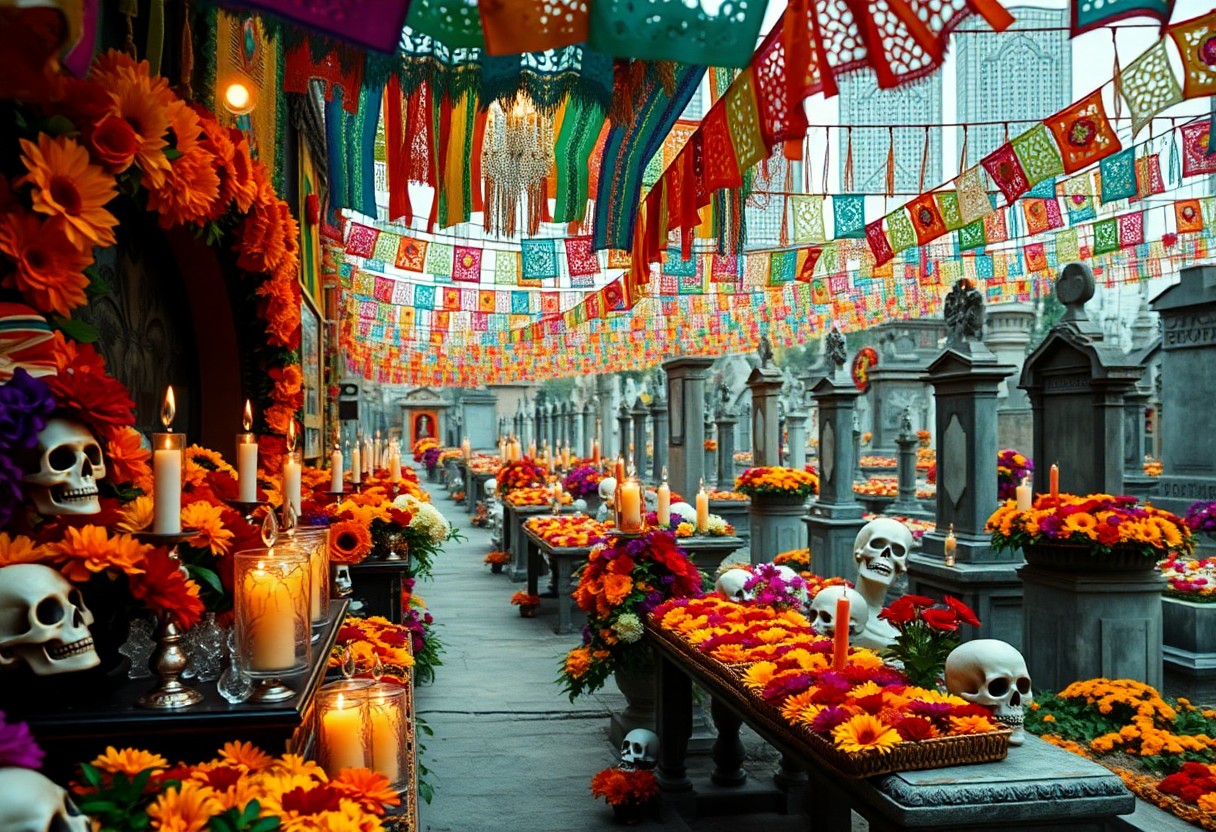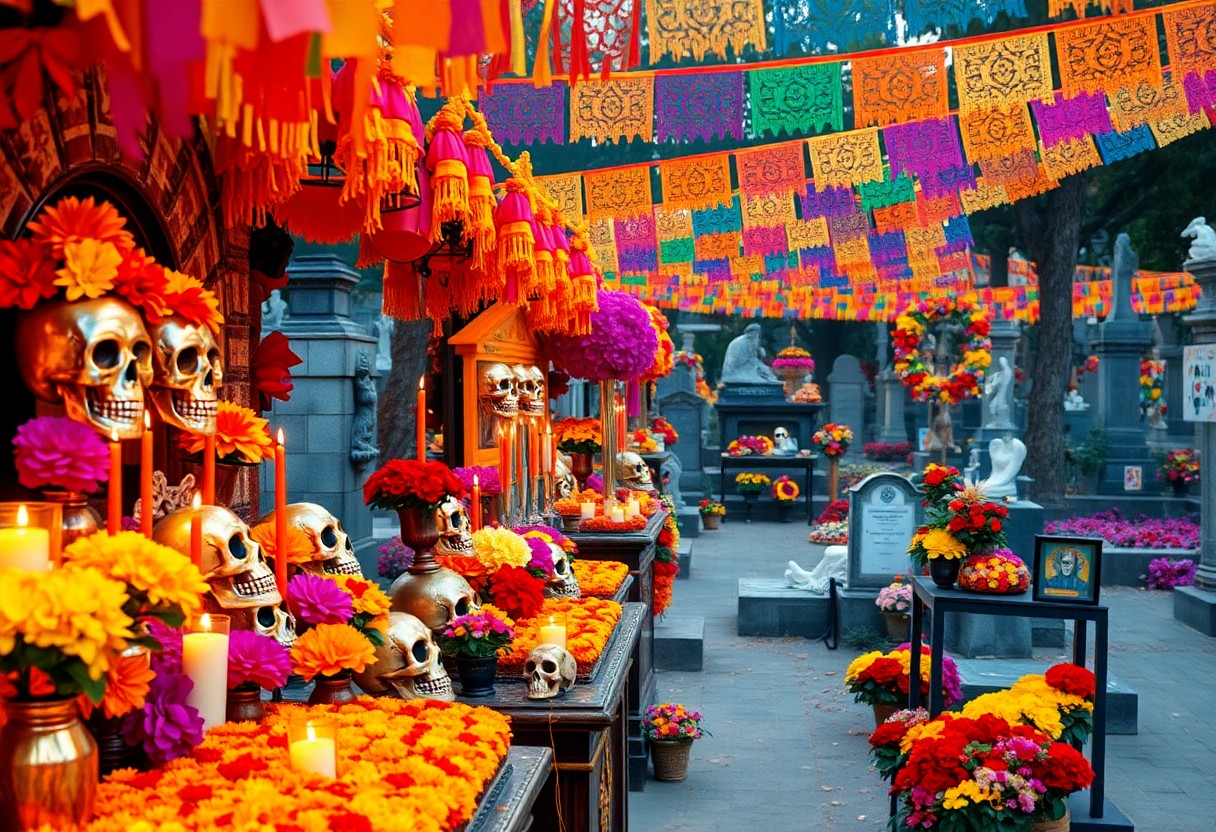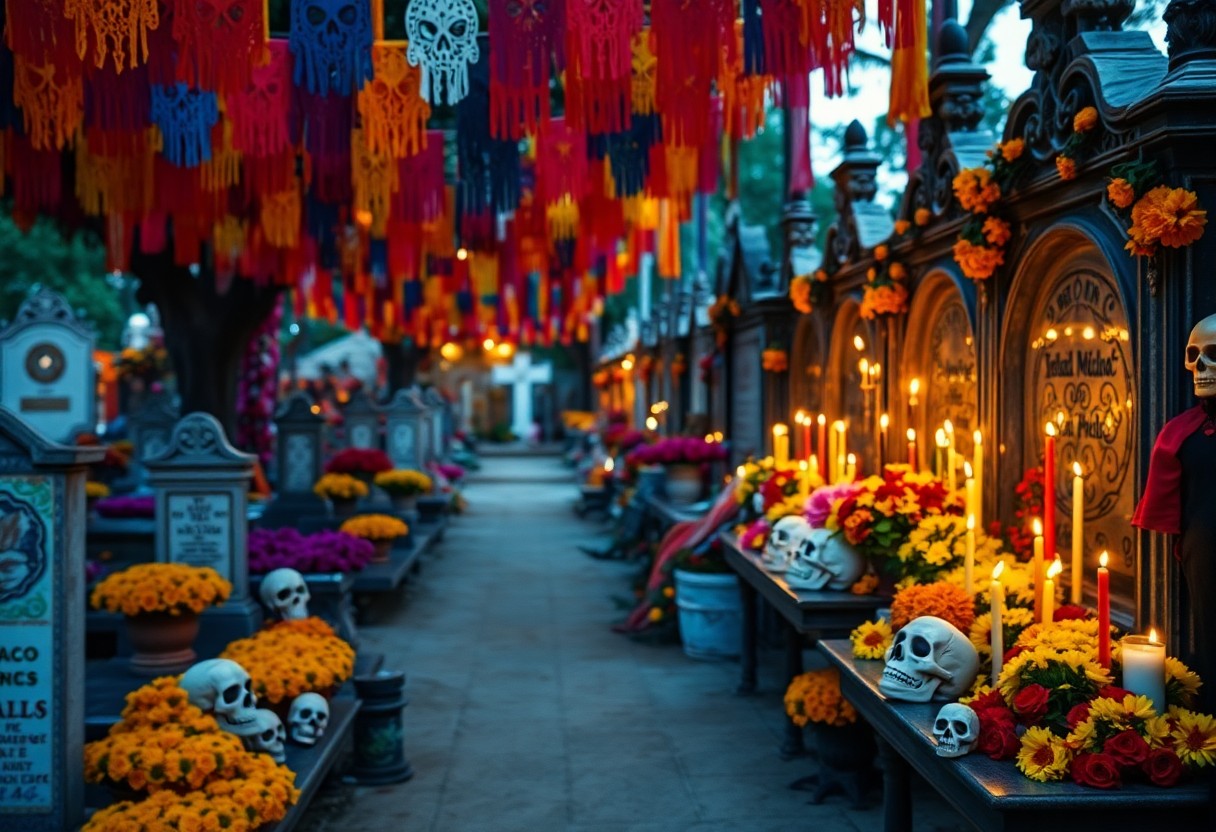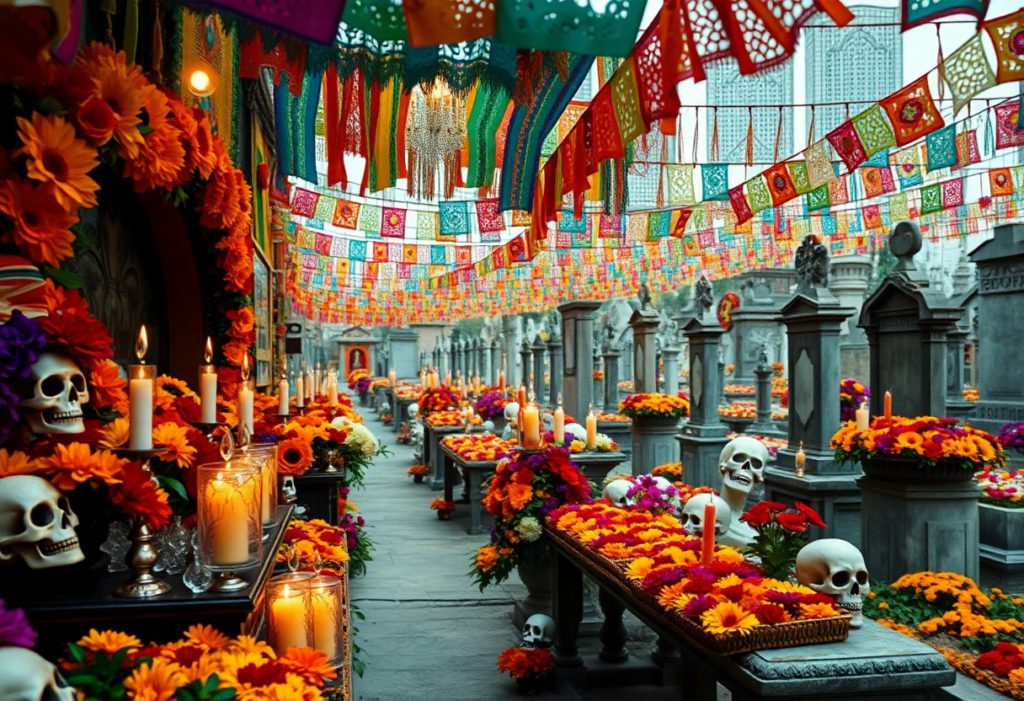Many cultures tend to avoid discussing death, perceiving it as a taboo subject; however, in San Miguel de Allende, death is embraced and celebrated with vibrant colors, heartfelt traditions, and joyful remembrance. During the Day of the Dead, visitors will witness streets filled with radiant marigolds, families gathering to honor their departed loved ones, and intricately crafted altars laden with offerings. This celebration transcends sorrow, highlighting the importance of embracing death as a natural aspect of life’s journey. In San Miguel de Allende, you will encounter a fascinating blend of ancient rituals and modern festivities, making it an essential destination to explore this profound cultural tradition that emphasizes life and remembrance.

Uncover the Fascinating Origins of the Day of the Dead Celebration
Long before the Spanish colonizers arrived, the Day of the Dead (Día de los Muertos) was deeply rooted in ancient Mesoamerican cultures. Indigenous groups, especially the Aztecs, celebrated their ancestors through a month-long festival in the Aztec calendar month of Miccailhuitontli, dedicated to honoring the goddess Mictecacihuatl, known as the “Lady of the Dead.” These rituals underscored the cyclical nature of life and death, establishing a solid foundation for the contemporary celebration that continues to resonate with communities today.
Dive into the Time-Honored Traditions of Ancient Cultures
For over 2,500 years, indigenous civilizations in Mexico have engaged in sacred rituals to honor their deceased ancestors. These profound traditions encompass offerings of food, fragrant flowers, and incense, symbolizing the enduring bond between the living and those who have passed on. The Aztecs held a belief that death was not a conclusion but a transition to another realm of existence. This perspective continues to influence the essence of the Day of the Dead today, where the emphasis lies on celebrating life alongside those who have transitioned to the afterlife.
Explore the Impact of Spanish Influence on Day of the Dead Celebrations
The arrival of Spanish colonizers in the 16th century brought significant changes to the Day of the Dead celebration. The Catholic Church integrated indigenous rituals with the observances of All Saints’ Day (November 1st) and All Souls’ Day (November 2nd), condensing the month-long festivities into a two-day celebration. This remarkable fusion resulted in the modern version of the holiday, intertwining pre-Hispanic traditions with Catholic practices, leading to a unique cultural expression that honors both heritage and faith.
This cultural blending introduced new elements, such as the vibrant use of marigold flowers and ofrendas (altars), which have become central to the celebration. Despite efforts by the Spanish to diminish indigenous practices, the resilience and vibrancy of these traditions ensured their survival, creating a rich cultural hybrid. Today, the Day of the Dead in San Miguel de Allende reflects this illustrious history, offering a vibrant and deeply meaningful experience for both locals and visitors alike.
Delve into the Profound Significance of the Day of the Dead
One of the most profound aspects of the Day of the Dead is its celebration of life rather than an emphasis on mourning death. In San Miguel de Allende, this unique tradition transforms grief into joy, as families honor their departed loved ones with vibrant altars, lively music, and heartfelt offerings. The belief is that the spirits of the departed return to enjoy the festivities, creating a spiritual reunion that is both uplifting and deeply meaningful. This unique perspective on death, rooted in ancient Mesoamerican and Catholic traditions, renders the Day of the Dead an experience filled with emotion and reverence.
Discover the Heartfelt Significance of Ofrendas in Celebrations
Ofrendas, or altars, are the focal point of the Day of the Dead celebrations in San Miguel de Allende. These beautifully crafted altars are adorned with vibrant marigold flowers, flickering candles, cherished photographs, and the favorite foods and drinks of the deceased. The ofrendas act as a warm invitation for the spirits, symbolizing love, remembrance, and eternal connection. By creating these altars, families ensure that the memories of their loved ones remain alive, beautifully intertwining tradition with personal connection and heartfelt sentiments.
Witness the Evolution of Day of the Dead Celebrations
As time progresses, the Day of the Dead in San Miguel de Allende has gracefully embraced modern influences while staying true to its roots. While some urban areas may incorporate elements reminiscent of Halloween, the core essence of honoring the deceased continues to remain unchanged. The celebration has gained popularity, attracting visitors from around the globe who come to witness its unique blend of tradition, culture, and festivity, making it an unforgettable experience.
With the influence of globalization, the Day of the Dead has garnered increased international attention, leading to a fascinating mix of cultural influences. In San Miguel de Allende, this has brought about both opportunities and challenges. While the festival’s rising popularity has significantly boosted tourism, there are ongoing concerns regarding the preservation of its authenticity. Despite these changes, the community remains steadfastly committed to maintaining the sacred and joyful spirit of the celebration, ensuring that it continues to honor the deceased with the utmost respect and reverence.

Experience Mexico’s Unique Perspective on Death During Celebrations
Mexico’s relationship with death is distinctly different from many other cultures. Here, death is perceived not as an end but as a natural continuation of life, a perspective deeply rooted in indigenous traditions and Catholic beliefs. During the Day of the Dead, this view is celebrated with vibrant colors, lively music, and joyful remembrance, transforming what might be somber elsewhere into a vibrant tribute to life. In San Miguel de Allende, this celebration is particularly vivid, featuring ofrendas (altars) adorned with marigolds, photos, and offerings that welcome the spirits of loved ones back home. Here, death is embraced with open arms rather than feared, creating a unique cultural experience that is truly unparalleled.

Understanding the Distinct Differences Between Day of the Dead and Halloween
While both the Day of the Dead and Halloween involve themes of death and skeletons, they significantly differ in their approach and meaning. The Day of the Dead, or Día de los Muertos, is a joyful celebration centered on honoring deceased loved ones and is deeply ingrained in Mexican culture. In contrast, Halloween is a festival of spooky fun with origins in Celtic traditions, primarily focused on fear and mystery. While Halloween emphasizes eerie themes, the Day of the Dead highlights remembrance and celebration of life, showcasing a richer emotional experience.
Trace the Historical Origins of Both Celebrations
The Day of the Dead traces its roots back over 3,000 years to ancient Mesoamerican civilizations such as the Aztecs, who celebrated the goddess Mictecacihuatl during their rituals. With the arrival of Spanish colonization, the tradition blended with Catholic holidays, specifically All Saints’ Day and All Souls’ Day, resulting in the modern celebration recognized today. Halloween, on the other hand, originated as the Celtic festival of Samhain, which marked the thin veil between the living and the dead, eventually being Christianized by the Church.
Explore the Purpose and Meaning Behind Each Celebration
The Day of the Dead is a time to celebrate the lives of departed loved ones, embracing the reality of death as a natural part of life’s journey. Families create ofrendas (altars) adorned with marigolds, photos, and favorite foods to welcome the spirits back into their homes. In contrast, Halloween is characterized by fun and fright, featuring costumes, trick-or-treating, and spooky themes that often prioritize entertainment over reflection.
Moreover, the Day of the Dead carries a deeply spiritual essence, emphasizing reconnecting with ancestors and honoring their legacy. It serves as an opportunity for families to gather, share stories, and celebrate the continuity of life. In comparison, while Halloween offers entertainment, it lacks the profound cultural and emotional depth that the Day of the Dead embodies.
Explore the Unique Traditions and Activities of Both Celebrations
In San Miguel de Allende, the vibrant traditions of the Day of the Dead come alive through ofrendas, lively parades, and families decorating graves with marigolds. Participants often dress as Catrinas or skeletons, while traditional foods like <a href=”https://fallinginlovewithsanmiguel.com/top-5-reasons-to-retire-in-san-miguel/”>pan de muerto</a> are shared among friends and family. Conversely, Halloween festivities typically include trick-or-treating, pumpkin carving, and costume parties heavily influenced by American culture.
In San Miguel de Allende, Halloween celebrations are more common among expatriates and urban locals, whereas the Day of the Dead remains a deeply rooted tradition for many Mexican families. The city’s celebrations beautifully blend solemn remembrance with lively festivities, offering a unique and rich experience that cannot be found elsewhere.
Immerse Yourself in the Vibrant Celebrations of San Miguel de Allende
Despite its colonial charm, San Miguel de Allende transforms into a vibrant hub of activity during the Day of the Dead. Visitors will witness streets overflowing with vivid marigold flowers, intricate papel picado, and families uniting to honor their loved ones. The city hosts lively parades, where locals don costumes as Catrinas and skeletons, blending tradition with artistic expression. You can explore beautifully crafted ofrendas in public spaces, each telling a poignant story of remembrance. While the celebration is filled with joy, it’s vital to respect the sacred nature of the event, especially in cemeteries where families gather privately to celebrate the lives of those who have departed.
Learn About Traditional Day of the Dead Customs in San Miguel de Allende
For centuries, Day of the Dead traditions in San Miguel de Allende have harmoniously blended indigenous and Catholic influences, creating a vibrant celebration that honors both life and death. You’ll see families constructing ofrendas (altars) adorned with photos, candles, and favorite foods of the deceased. The streets come alive with marigolds, calaveras (decorated skulls), and papel picado (perforated paper banners). These cherished traditions serve as a powerful tribute to loved ones, inviting their spirits to return and celebrate alongside the living. The atmosphere is filled with joy, music, parades, and communal gatherings that reflect the Mexican embrace of death as an integral part of life’s journey.
Explore the Importance of Alfeñiques and Papel Picado in the Celebrations
Integral to the Day of the Dead festivities, alfeñiques are intricate sugar sculptures crafted in the shape of skulls, animals, or other figures. These delicious works of art symbolize the sweetness of life and are often personalized with the names of the deceased. Complementing these edible creations, papel picado—delicately cut tissue paper banners—adds color and movement to the celebrations. The perforations in the paper are believed to guide spirits to the ofrendas, while the vibrant designs serve as a poignant reminder of life’s fleeting nature.
Understand the Cultural Significance of Marigolds and Calaveras
If you visit San Miguel de Allende during the Day of the Dead, you’ll find yourself surrounded by the striking orange hues of marigolds, known as cempasúchil. These flowers are thought to guide spirits with their bright colors and fragrant aroma. Alongside them, calaveras (decorated skulls) are ubiquitous—adorning altars, appearing in parades, and even serving as face paint. These whimsical and colorful skulls embody the playful acceptance of death prevalent in Mexican culture.
A deeper examination of marigolds and calaveras reveals their significant cultural meaning. Marigolds are not merely decorative; their petals create paths leading to ofrendas, ensuring that spirits can find their way home. Calaveras, whether crafted from sugar, clay, or painted on faces, serve as a reminder that death is not to be feared but embraced. In San Miguel de Allende, these elements come together to create a visually stunning and spiritually meaningful experience, honoring the cycle of life and death in a way that is simultaneously joyful and respectful.
Celebrate Life and Memory in San Miguel de Allende
From a broader perspective, experiencing San Miguel de Allende during the Day of the Dead offers a profound way to embrace death through its vibrant celebrations. You will witness a captivating blend of ancient traditions and modern expressions, where families honor their loved ones with colorful altars, marigold flowers, and joyous gatherings. The city’s streets come alive with parades, papel picado, and the enticing aroma of pan de muerto, inviting you to immerse yourself in a cultural perspective that views death as a natural part of life. In San Miguel de Allende, you don’t just observe the Day of the Dead—you feel its spirit, celebrating life and memory in an authentically Mexican way.
Essential Questions About the Day of the Dead Celebrations
Q: What makes San Miguel de Allende a standout destination for Day of the Dead celebrations?
A: San Miguel de Allende is renowned for its vibrant and authentic Day of the Dead celebrations. The city masterfully combines traditional Mexican customs with local touches, resulting in elaborate parades, colorful altars, and heartfelt community gatherings. The historic streets and colonial architecture provide a picturesque backdrop for the festivities, making it a memorable experience for all visitors.
Q: What are the key traditions associated with the Day of the Dead in San Miguel de Allende?
A: Essential traditions include creating ofrendas (altars) adorned with beautiful marigold flowers, cherished photos of the deceased, and their favorite foods. Families engage in cleaning and decorating graves, and many people dress as skeletons or Catrinas. The city also hosts lively parades, live music, and cultural performances, offering a unique blend of solemn remembrance and joyful celebration.
Q: How can visitors respectfully participate in Day of the Dead celebrations in San Miguel de Allende?
A: Visitors should approach the celebrations with respect and cultural sensitivity. It’s advisable to avoid intrusive photography in cemeteries, as these spaces hold deep significance for families. Participating in public events like parades and workshops is encouraged, along with gaining a deeper understanding of the traditions beforehand. Supporting local artisans by purchasing handmade crafts or traditional foods is also a meaningful way to engage with the culture.
The Article: Day of the Dead: A Unique Way to Embrace Death in San Miguel de Allende appeared first on https://fallinginlovewithsanmiguel.com/
The Article Embrace Death: Discover Day of the Dead in San Miguel de Allende Was Found On https://limitsofstrategy.com


